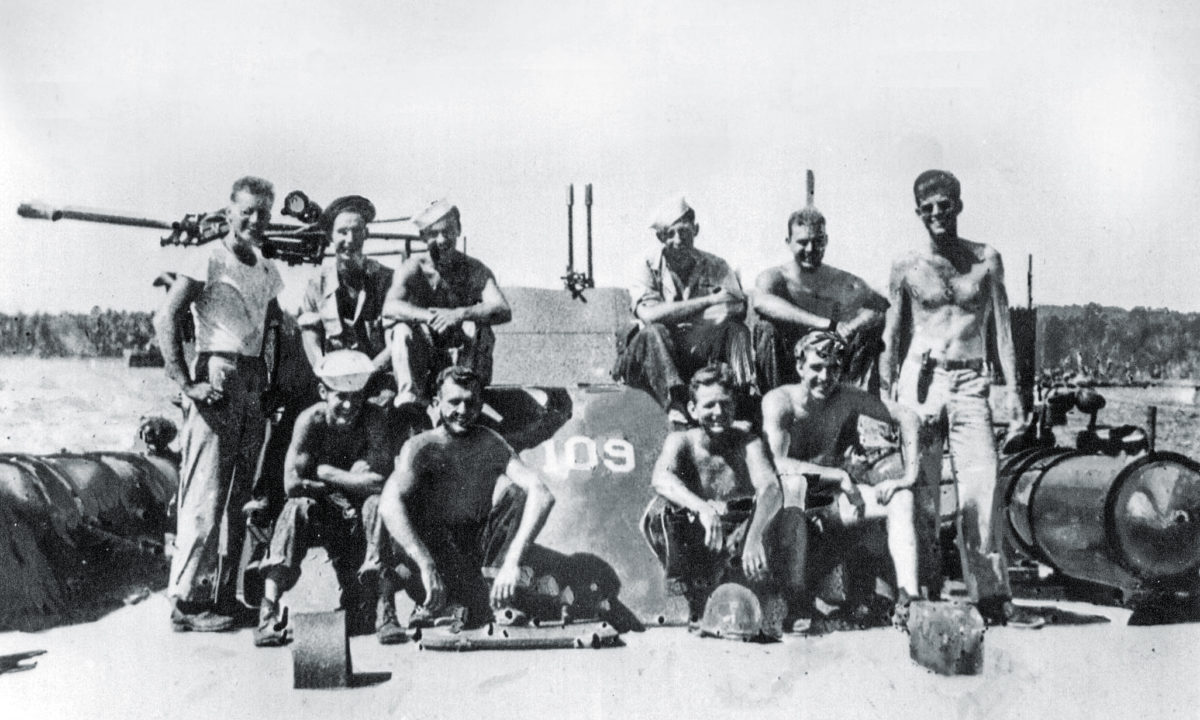Lt. j.g. John F. Kennedy (standing, far right) and his crew pose for a group photo aboard the U.S. Navy motor torpedo boat PT-109 in a photo taken at Rendova, in the Russell Islands (part of the Solomon Islands), in late July 1943. Kennedy had taken command of the 80-foot Elco-built vessel three months earlier at Tulagi, in the Nggela Islands, just nine days after he arrived in the Pacific.
The boat had seen extensive combat before Kennedy’s arrival, and the young officer and his crew undertook considerable maintenance and repair work in order for PT-109 to be deemed operational as part of Motor Torpedo Boat Squadron Two.
On the night of Aug. 1-2, 1943, 15 of the squadron’s PTs were dispatched from Rendova in four groups to intercept and engage five Japanese destroyers carrying troops and supplies from Bougainville Island through Blackett Strait to Vila, on the southern end of Kolombangara in the New Georgia Islands.
In what has been called one of the best-known small boat actions of World War II, PT-109 was patrolling in Gizo Strait when the Japanese destroyer Amagiri raced out of the inky darkness and rammed Kennedy’s vessel, cutting it in half. Two of PT-109’s crewmembers were killed in the collision, and the others — several of them seriously injured, were thrown into the water.
Over the following days Kennedy, as his later Navy Cross citation read, “ … unhesitatingly braved the difficulties and hazards of darkness to direct rescue operations, swimming many hours to secure aid and food after he had succeeded in getting his crew ashore. His outstanding courage, endurance and leadership contributed to the saving of several lives and were in keeping with the highest traditions of the United States Naval Service.”
After his return to the United States, the future president was asked how he’d become a hero. Kennedy replied simply: “It was involuntary, they sank my boat.”
historynet magazines
Our 9 best-selling history titles feature in-depth storytelling and iconic imagery to engage and inform on the people, the wars, and the events that shaped America and the world.


